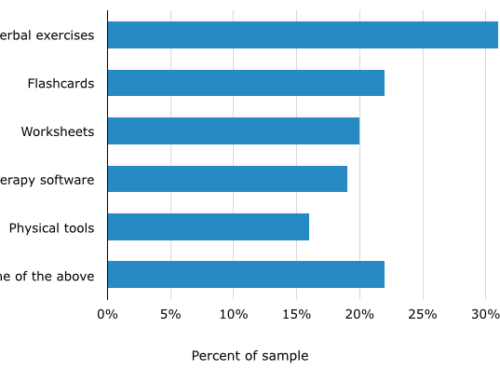Hello again!
It has been a very long time. I drifted away from the blog when I became busy with other projects. One project I completed was a course that is now available through Northern Speech Services (NSS). The course is Stopping the Stuttering Trajectory in the Preschool Years. It is a solid beginner-intermediate course for SLPs who wish to help children during these critical years.
I’m back to share an interesting article I read in the June 27, 2016 issue of the Wall Street Journal. The article is Tech and the Autistic Child: What We’ve Learned. It is written by Alexandra Samuel, who’s 10 year old son has autism. He is high-functioning. She sheds light on technology for autistic children by discussing what has worked for her son. What she has observed is informative and can help us guide parents in our recommendations to them. I have selected the highlights of the points she makes.
- Set Goals First Then Search. Parents need to set their goals. Once the goals have been set, parents should then search for the technologies that will help meet those goals.
- Monitor the Child’s Emotions. Be a careful observer and modifier of the child’s tech time. Some technology can overstimulate while others help calm the child down. Parents should know what emotional level they want for their child and select the appropriate technology to help the child get there.
- Take Care When Selecting. Use technology to teach the child to handle emotions. Ms. Samuels tried the game “If…” because it had received positive reviews for teaching emotional intelligence. When she tried it with her son, she found the game to be overstimulating to the point that, “…it led to daily meltdowns.” She found greater success with non-therapy oriented iPhone games because she held the phone and controlled the controls. When she sensed her son’s emotions were running towards out of control, she intruded by insisting that she and her son take three deep breaths. Over time, her son was able to manage his emotions, talk about the situations of the characters and open up about his feelings .
- Use Technology to Uncover the Child’s Gifts and Interests. Ms. Samuels has been able to use her son’s passion for video games as opportunities to discover underlying interests he may have. Thus, she has introduced him to programming and books and games for computer geeks.
- Technology May Not Be Best Choice. The are technologies designed to help autistic individuals with scheduling and time management. She found that one such technology, designed as a game, was too engaging. Her son was more interested in accumulating game points and prizes than in changing his daily behaviors. Ms. Samuels reverted to paper schedules and charts.
- Parent Support. Ms. Samuels has found that online support groups have helped her. She gets advice from the insights and experiences of others. Online support groups can be a place to vent and be understood by parents of similarly involved children.

